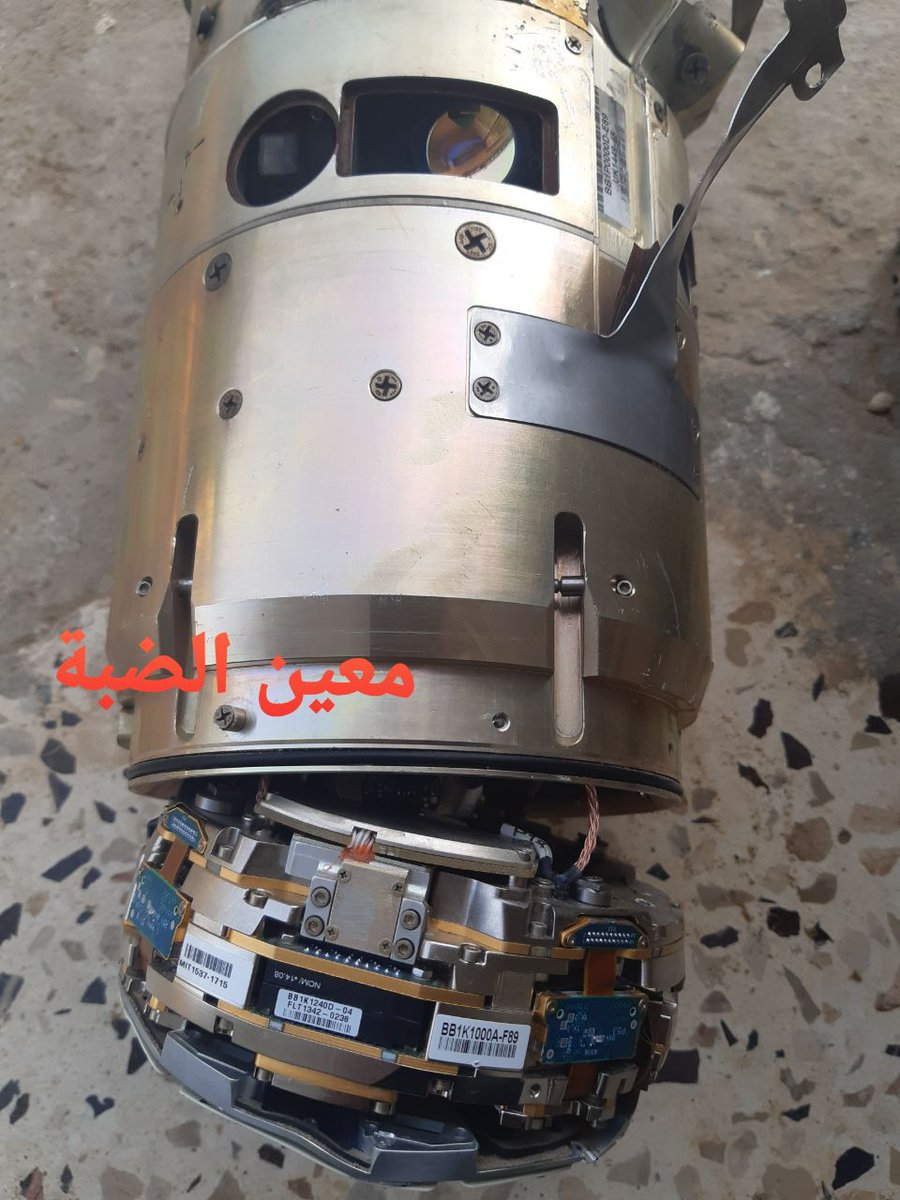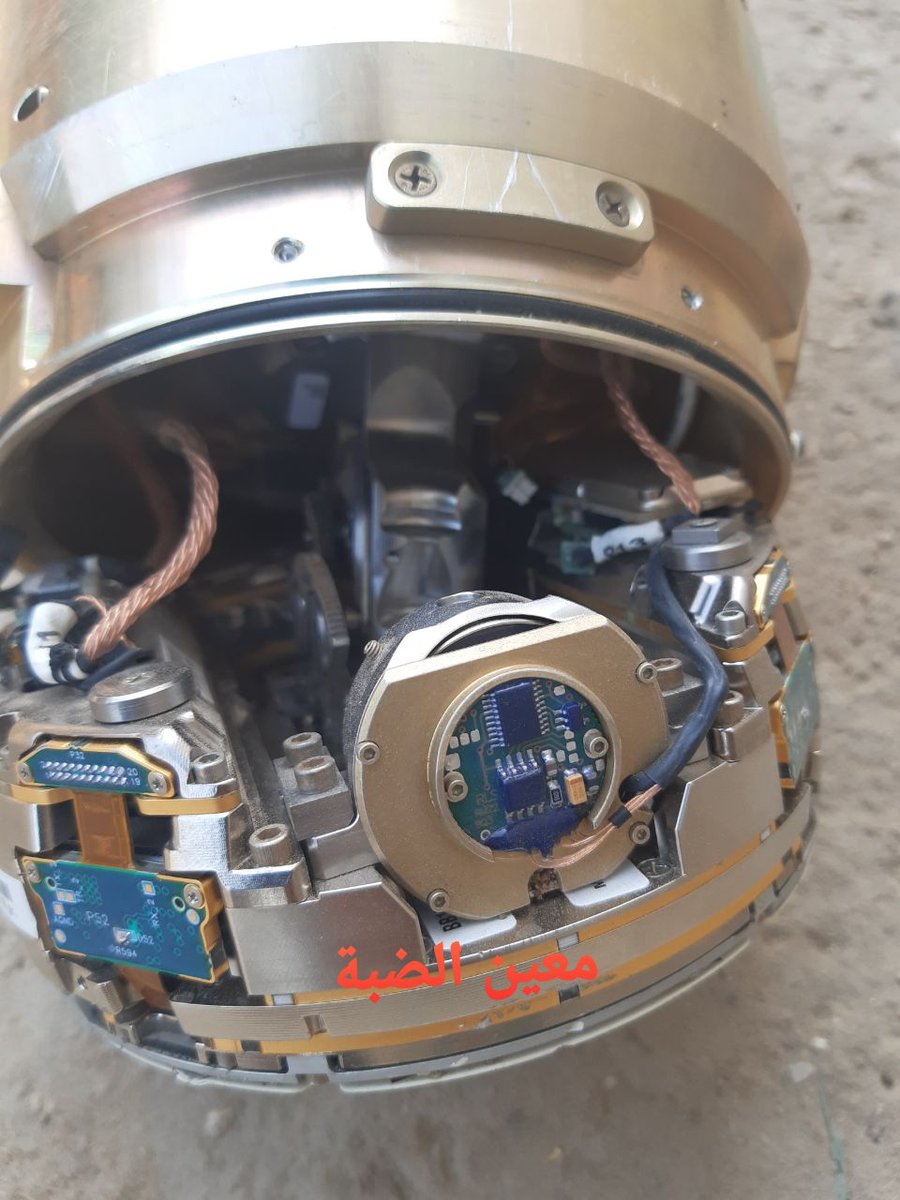Winston
Lorenzo von Matterhorn
- Joined
- Jan 31, 2009
- Messages
- 9,560
- Reaction score
- 1,748
Can't get around the problem described in the title, so it seems like self-destruct mechanism reliability would be better.
If An Israeli Stunner Missile Really Did Fall Into Russian Hands It Is A Huge Deal
A Stunner fell into Syrian territory without self-destructing in its first combat use, now a report says the Assad regime turned it over to Russia.
NOVEMBER 13, 2019
https://www.thedrive.com/the-war-zo...did-fall-into-russian-hands-it-is-a-huge-deal
In recent days, it has been reported that an errant Stunner missile, the interceptor component of Israel's David Sling medium-range air defense system, fell into Syrian territory in a fairly intact manner.
Supposedly the Assad regime was able to recover it and transferred the advanced weapon to Moscow for examination and technological exploitation. Stunner represents cutting-edge missile technology that is in some ways more advanced than any other system on the planet. The idea that Russia could gain very valuable insights into its technology is especially troubling as surface-to-air missile systems have extremely high strategic importance for Russia and are one of the country's most successful arms exports to both allies and enemies alike.
Nearly a year and a half ago, the Jerusalem Post reported that two Stunners were fired at an OTR-21 Tochka (NATO reporting name SS-21 Scarab) short-range ballistic missile that rose out of western Syria for fear that it might fall into Israeli territory near the Sea of Galilee. The Russian-made ballistic missiles were fired by the Syrian Army against rebel positions in the area. After the Stunners were already launched, it became clear that the ballistic missile was not a threat to Israel so the David Sling operators ordered the missiles to self-destruct. One did just that, but the other failed to do so, careening into Syrian territory.
This was the first operational use of the David Sling air defense system and until recently, there was no word about what came of the errant missile. Now a report from China's SINA News (via Haaretz and Asia Times and other outlets) claims it was recovered relatively intact by Syrian forces and transferred into Russian hands.
The most unique aspect of Stunner—which was co-developed by American missile maker Raytheon and Israel's Rafael—is its use of dual-mode terminal homing. Its canted "dolphin" nose houses both imaging infrared and active electronically scanned array millimeter-wave radar seekers. This makes the weapon far more challenging to decoy or jam and more reliable overall in intercepting whatever its target may be, from short-range ballistic missiles to stealth cruise missiles. Beyond its cutting-edge dual-mode seeker, the missile is packed with advanced and highly miniaturized systems, including a data link that is fully networked with its David Sling battery and other offboard sensor systems and platforms. The missile is also super maneuverable with an advanced propulsion system and uses a hit-to-kill concept of operations, meaning it does not carry a traditional warhead. It slams into its target instead. This allows the missile to be far lighter, more compact, and more maneuverable than its traditional high-explosive packing counterparts.
Intact Seeker Section From An Iron Dome Tamir Interceptor Fell Into Gaza
Losing these sensitive components could represent a huge technological loss.
NOVEMBER 14, 2019
https://www.thedrive.com/the-war-zo...an-iron-dome-tamir-interceptor-fell-into-gaza
Just hours after we posted a story about a report that an Israeli Stunner surface-to-air missile used in the David's Sling medium-range air defense system fell into Syrian territory and was transferred by the Assad regime to Russia, images have appeared on social media showing what appears to be the intact fuse section of a Tamir interceptor used by the Iron Dome system. This proximity fuse system is highly advanced as it has to detect a small and fast-flying target—a rocket in most cases—and detonate the missile's warhead with perfect timing in order to destroy it. It is also highly miniaturized yet hardened enough to withstand the extreme G forces sustained by the super-maneuverable interceptor.
UPDATE: Upon further review of the photos, I actually believe the section includes the missile's active radar seeker, as well. That seems to be the component hanging out of the front of the tube. In other words, this would be the entire seeker and fuse section forward of the fins. Obviously, the loss would be even more significant if this is indeed the case.
Tamir uses a very sensitive active radar seeker and a command data-link system to chase down an incoming rocket. These components and its onboard autopilot get the missile within extremely close range of its target, at which time the missile's proximity fuse system detects the object as it begins to pass abeam the missile and detonates the onboard warhead, blasting it out of the sky. The missile is so agile and accurate that often times it actually slams into the incoming target, but it is not designed as strictly a hit-to-kill weapon by any means.



If An Israeli Stunner Missile Really Did Fall Into Russian Hands It Is A Huge Deal
A Stunner fell into Syrian territory without self-destructing in its first combat use, now a report says the Assad regime turned it over to Russia.
NOVEMBER 13, 2019
https://www.thedrive.com/the-war-zo...did-fall-into-russian-hands-it-is-a-huge-deal
In recent days, it has been reported that an errant Stunner missile, the interceptor component of Israel's David Sling medium-range air defense system, fell into Syrian territory in a fairly intact manner.
Supposedly the Assad regime was able to recover it and transferred the advanced weapon to Moscow for examination and technological exploitation. Stunner represents cutting-edge missile technology that is in some ways more advanced than any other system on the planet. The idea that Russia could gain very valuable insights into its technology is especially troubling as surface-to-air missile systems have extremely high strategic importance for Russia and are one of the country's most successful arms exports to both allies and enemies alike.
Nearly a year and a half ago, the Jerusalem Post reported that two Stunners were fired at an OTR-21 Tochka (NATO reporting name SS-21 Scarab) short-range ballistic missile that rose out of western Syria for fear that it might fall into Israeli territory near the Sea of Galilee. The Russian-made ballistic missiles were fired by the Syrian Army against rebel positions in the area. After the Stunners were already launched, it became clear that the ballistic missile was not a threat to Israel so the David Sling operators ordered the missiles to self-destruct. One did just that, but the other failed to do so, careening into Syrian territory.
This was the first operational use of the David Sling air defense system and until recently, there was no word about what came of the errant missile. Now a report from China's SINA News (via Haaretz and Asia Times and other outlets) claims it was recovered relatively intact by Syrian forces and transferred into Russian hands.
The most unique aspect of Stunner—which was co-developed by American missile maker Raytheon and Israel's Rafael—is its use of dual-mode terminal homing. Its canted "dolphin" nose houses both imaging infrared and active electronically scanned array millimeter-wave radar seekers. This makes the weapon far more challenging to decoy or jam and more reliable overall in intercepting whatever its target may be, from short-range ballistic missiles to stealth cruise missiles. Beyond its cutting-edge dual-mode seeker, the missile is packed with advanced and highly miniaturized systems, including a data link that is fully networked with its David Sling battery and other offboard sensor systems and platforms. The missile is also super maneuverable with an advanced propulsion system and uses a hit-to-kill concept of operations, meaning it does not carry a traditional warhead. It slams into its target instead. This allows the missile to be far lighter, more compact, and more maneuverable than its traditional high-explosive packing counterparts.
Intact Seeker Section From An Iron Dome Tamir Interceptor Fell Into Gaza
Losing these sensitive components could represent a huge technological loss.
NOVEMBER 14, 2019
https://www.thedrive.com/the-war-zo...an-iron-dome-tamir-interceptor-fell-into-gaza
Just hours after we posted a story about a report that an Israeli Stunner surface-to-air missile used in the David's Sling medium-range air defense system fell into Syrian territory and was transferred by the Assad regime to Russia, images have appeared on social media showing what appears to be the intact fuse section of a Tamir interceptor used by the Iron Dome system. This proximity fuse system is highly advanced as it has to detect a small and fast-flying target—a rocket in most cases—and detonate the missile's warhead with perfect timing in order to destroy it. It is also highly miniaturized yet hardened enough to withstand the extreme G forces sustained by the super-maneuverable interceptor.
UPDATE: Upon further review of the photos, I actually believe the section includes the missile's active radar seeker, as well. That seems to be the component hanging out of the front of the tube. In other words, this would be the entire seeker and fuse section forward of the fins. Obviously, the loss would be even more significant if this is indeed the case.
Tamir uses a very sensitive active radar seeker and a command data-link system to chase down an incoming rocket. These components and its onboard autopilot get the missile within extremely close range of its target, at which time the missile's proximity fuse system detects the object as it begins to pass abeam the missile and detonates the onboard warhead, blasting it out of the sky. The missile is so agile and accurate that often times it actually slams into the incoming target, but it is not designed as strictly a hit-to-kill weapon by any means.




